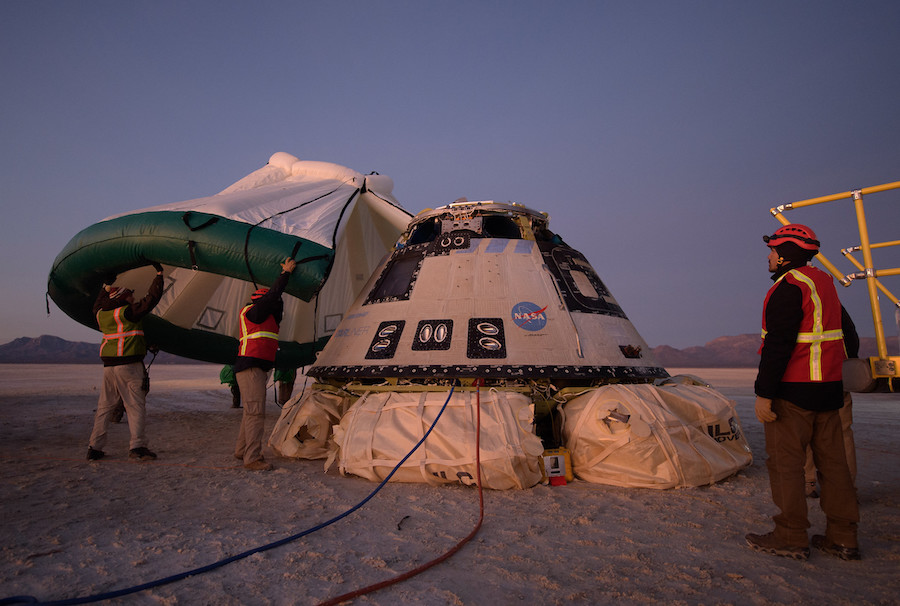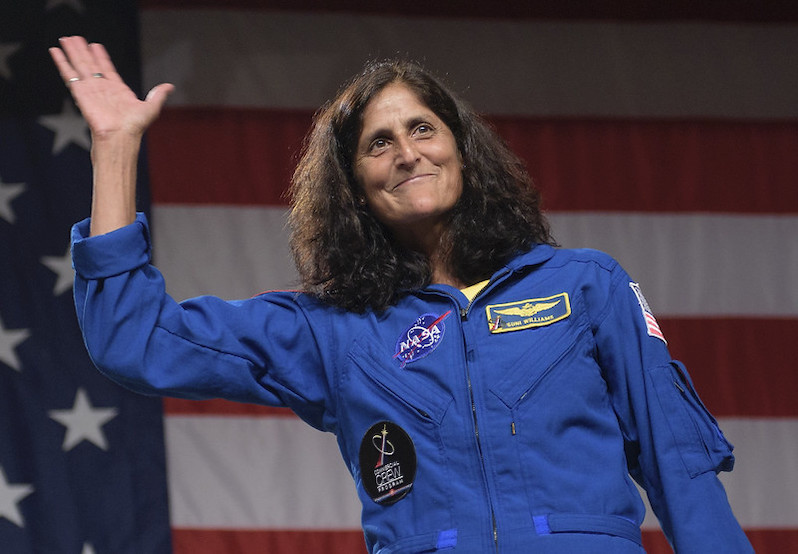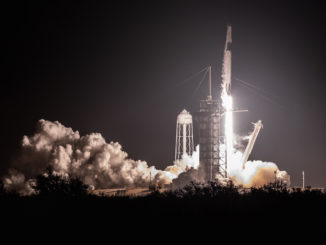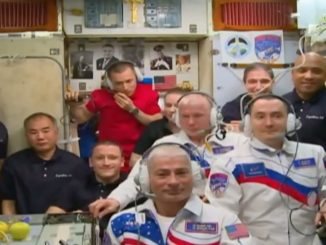
Fresh from its inaugural test flight in space, Boeing’s first reusable Starliner crew capsule has been named “Calypso” by NASA astronaut Suni Williams, who will command the same vehicle on its next trip into orbit.
The Starliner spacecraft landed at 7:58 a.m. EST (5:58 a.m. MST; 1258 GMT) Sunday to complete an abbreviated two-day Orbital Flight Test.
The mission was cut short after an on-board timing error prevented the spacecraft from performing a planned orbit insertion burn soon after launch Friday. Mission controllers uplinked commands for the Starliner to enter a safe, but unplanned orbit, leaving the capsule unable to reach the International Space Station as intended.
Read our earlier story for details on the timing error, and its implications for plans to fly astronauts on the next Starliner mission.
Boeing has produced two reusable human-rated spaceships for flights to the space station under a $4.2 billion contract with NASA. The space agency has signed a similar $2.6 billion contract with SpaceX in 2014 for development of the Crew Dragon spacecraft, on which astronauts will fly new vehicles on each mission.
The Starliner vehicle that landed Sunday in New Mexico, designated Spacecraft 3, is slated to fly again on Boeing’s second crewed mission. NASA has assigned astronauts Suni Williams and Josh Cassada that Starliner mission, the first regular crew rotation flight to the space station.
Williams and Cassada will be joined by two other crew members from NASA’s international partners. Their mission will follow the Crew Flight Test that will use Spacecraft 2, which is in final assembly at Boeing’s Starliner factor at the Kennedy Space Center in Florida.
Each of the space-rated Starliner vehicles is designed for 10 missions.
Spacecraft 1 was built for Boeing’s pad abort test and is not intended to fly in space.
Boeing astronaut Chris Ferguson, a former NASA space shuttle commander, will launch on the Crew Flight Test to the space station with NASA astronauts Mike Fincke and Nicole Mann.
Ferguson, Fincke, Mann and Williams were in New Mexico Sunday for the Starliner landing.
In an interview on NASA TV’s landing broadcast, Williams said she has named the Starliner vehicle that returned Sunday “Calypso” in an ode to the research vessel used by French explorer Jacques Cousteau.
“I love the ocean,” said Williams, a retired U.S. Navy captain and a veteran of two previous space station expeditions. “There’s so much to discover in the ocean, and there’s so much to discover in space. It just seemed like a natural marriage.”

Boeing owns the Starliner crew capsules, and a senior company official said Sunday he liked the name Calypso.
“(It’s) hard to resist the allure of the commander of your first revenue service flight picking her (spacecraft) name,” said Jim Chilton, vice president of Boeing’s space and launch division.
“Cool name, by the way, on a personal note,” he added. “It evokes Jacques Cousteau and exploration.”
In Greek mythology, Calypso is the daughter of Atlas. On the program’s early missions, all Starliner spacecraft will lift off on top of United Launch Alliance’s Atlas 5 rockets.
NASA Administrator Jim Bridenstine also endorsed the name choice.
“Calypso it is!” Bridenstine tweeted Sunday.
Email the author.
Follow Stephen Clark on Twitter: @StephenClark1.



